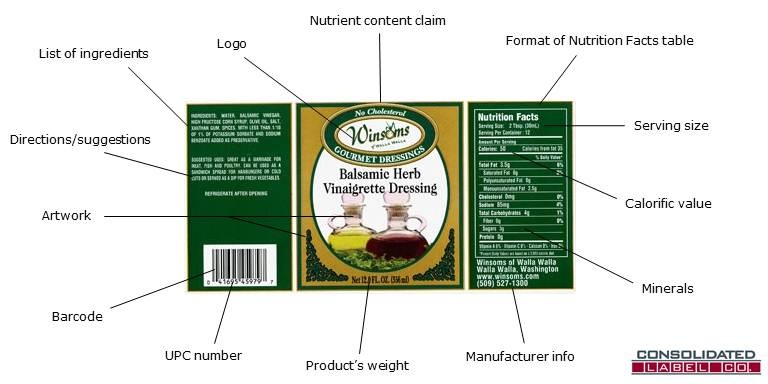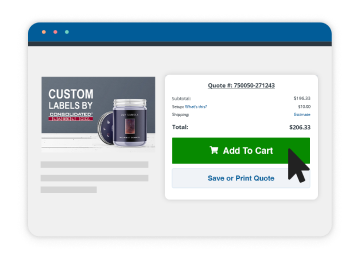
Do you have a new product but don’t know what is required on food labels? We print custom food labels for a variety of markets and have come to understand what should be on a label for it to do well. Consumers are paying more attention to product labels now than ever before which is why it’s important to know what information you should have on your food labels to help customers make a purchase decision. Before designing your label, you should review applicable labeling regulations.
For example, the Food and Drug Administration (FDA) regulates food labeling and has guidelines for different types of claims that can be on a food label – health, nutrient content, and structure/function.
- Health: Used to describe a relationship between a food, food component or dietary supplement ingredient, and “reducing [the] risk of a disease or health-related condition.”
- Nutrient content: Characterizes the level of a nutrient in a food product like high, free, more, reduced, etc.
- Structure/function: Used to describe the role a nutrient or dietary ingredient that is intended to affect normal structure or function in humans, for example, “calcium builds strong bones.”
The FDA also has requirements for how to format a Nutrition Facts table and what information should be on it. Although the FDA doesn’t test the nutrition of every food product, you must report accurate information on your label. Below is a list of information that should be on your product’s Principal Display Panel (the area most likely to be seen by consumers) in order to comply with labeling regulations:
- Food ingredients
- Minerals
- Caloric value
- Typical serving size
- If it contains any of the top 8 allergens (milk, eggs, fish, crustacean shellfish, tree nuts, peanuts, wheat and soybeans)
For more information about the nutrition facts table, check out our blog article “What You Should Know about Nutrition Labels.”
Below is a diagram of the key elements that should be on your food label:

Ways to Enhance Your Labels
When creating food labels, you should first research and examine the product’s nutritional contents. Be aware that your claims can become empty statements to consumers if they think that the label’s information is misleading. Below is a glossary of claims you can use to highlight your product’s benefits if it meets requirements:
- Low calorie: 40 calories or less per serving
- Low cholesterol: 20 mg or less and 2 grams or less of saturated fat per serving
- Reduced: At least 25 percent less of the specified nutrient or calories than the usual product
- Good source of: Provides at least 10 to 19 percent of the Daily Value of a particular vitamin or nutrient per serving
- Calorie free: Less than five calories per serving
- Fat free/sugar free: Less than ½ gram of fat or sugar per serving
- Low sodium: 140 mg or less of sodium per serving
- High in: Provides 20 percent or more of the Daily Value of a specified nutrient per serving
- High fiber: Five or more grams of fiber per serving
Additional Terms to Consider
Customers nowadays want to make sure that they’re getting the most value for their money. Third-party certifications – like the Non-GMO Project and American Grassfed Association – are helping consumers determine whether food products really live up to its label claim(s). Below are some popular terms you can use to attract customers if your product can back it up:
- Natural or All Natural: Although there is no legal definition for the usage of ‘natural’ on a label, the precedent with the term is that it can be on a food label if the product “does not contain added color, artificial flavors or synthetic substances.”
- Organic: The U.S. Department of Agriculture (USDA) has guidelines for determining whether an animal product or plant can be labeled ‘organic.’ Check out our article on organic and natural product labeling for more information.
- Gluten-Free: Gluten is a protein complex found in wheat, barley, rye and triticale that has been found to cause allergic reactions in gluten-sensitive consumers. In August 2013, the FDA defined “gluten-free” foods as containing less than 20 parts per million of gluten.
- Light or Lite: A product labeled as ‘light’ or ‘lite’ has to show it has 1/3 fewer calories, fat or sodium of the regular version of that same product.
In today’s fast-paced world, labels are becoming even more important for differentiating brands and attracting customers. It’s important that first-time label buyers do their research on food label requirements before they design and order their labels so they don’t end up wasting time and resources.
Editor’s Note: This post was originally published in July 2013 and has been updated for accuracy and comprehensiveness.


